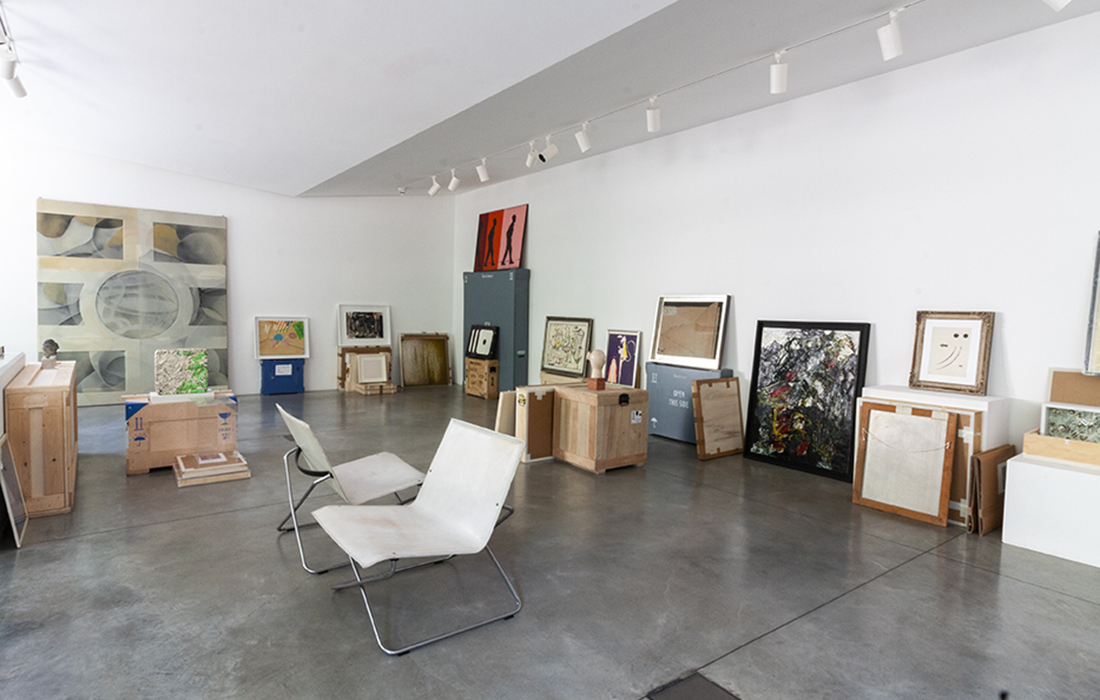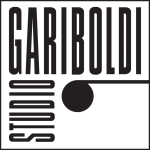César Baldaccini, born in Marseille in 1921, is an Italian-French sculptor and member of Nouveau Realism. From 1935 to 1939, César attended the Ecole des Beaux-Arts in Marseille and later he studied at the Ecole des Beaux-Arts in Paris, where he settled permanently in 1943. He was immediately involved in the Parisian cultural and artistic life, spending time with Alberto Giacometti, Jean Cocteau, Pablo Picasso, Germaine Richier and Jean Paul Sartre.
His first sculptures in metal and plaster date from this period, the result of a research free of all formal schemes and in opposition to both abstractionism and the extreme positions of constructivism. He held his first solo exhibition at the Parisian gallery Lucien Durand in 1954, thanks to which one of his works, Le Gobi, became part of the permanent collection of the Museum of Modern Art of Paris. In 1956 he participated in the Venice Biennale and in 1957 he won the first prize in the foreigners’ participation at the Carrara Biennale. He subsequently participated in the São Paulo Biennale, Documenta II (1959) and New York (1961).
From then on, he began welding together pieces of scrap metal, creating imaginary figures of insects, animals and nudes. Since then, he exhibited incessantly, participating to numerous ‘Salons’ in France and abroad.
Inspired by the New Realism current, which he joined in 1960 together with Arman, Klein, Raysse, Tinguely and Pierre Restany, he began to create his famous ‘compressions dirigée’ (controlled compressions), creating dense assemblages of car frames and metal objects hammered together and compressed, thus enhancing his material taste.
In the mid-1960s he also began to work with plastic, which he expanded and solidified. The Happenings, organized from 1967 to 1970, showed to the public the creation of his expansions.
Some examples of his art can be seen at the Centre National d’Art et de culture Georges-Pompidou (Bas relief, Tortue, le Diable), at the Musée d’Art Moderne de la Ville, at the Montparnasse Cemetery, at the Parisian Ministry of Post, at the MAC and the Bonneveine Centre (Le Pouce Géant) in Marseille and at the Musée de la Ville de Nice. Important retrospective exhibitions were organized in the 1980s: at the Musée d’Art Moderne, Liège; Espace Nicois d’Art et de Culture, Nice; Seibu Foundation, Ottara Museum, Japan; Palazzo Reale, Milan (1998); Hermitage, St. Petersburg (1998); Museu Brasileiro de Escultura ‘Marilisa Rathsam’, São Paulo (1999).
He also received many awards, such as the ‘Grand prix de la Ville de Paris’, the ‘Grand Prix National de Sculpture’ and the ‘Prix Rodin’ in Tokyo (1988).
He died in 1998 in Paris.
His first sculptures in metal and plaster date from this period, the result of a research free of all formal schemes and in opposition to both abstractionism and the extreme positions of constructivism. He held his first solo exhibition at the Parisian gallery Lucien Durand in 1954, thanks to which one of his works, Le Gobi, became part of the permanent collection of the Museum of Modern Art of Paris. In 1956 he participated in the Venice Biennale and in 1957 he won the first prize in the foreigners’ participation at the Carrara Biennale. He subsequently participated in the São Paulo Biennale, Documenta II (1959) and New York (1961).
From then on, he began welding together pieces of scrap metal, creating imaginary figures of insects, animals and nudes. Since then, he exhibited incessantly, participating to numerous ‘Salons’ in France and abroad.
Inspired by the New Realism current, which he joined in 1960 together with Arman, Klein, Raysse, Tinguely and Pierre Restany, he began to create his famous ‘compressions dirigée’ (controlled compressions), creating dense assemblages of car frames and metal objects hammered together and compressed, thus enhancing his material taste.
In the mid-1960s he also began to work with plastic, which he expanded and solidified. The Happenings, organized from 1967 to 1970, showed to the public the creation of his expansions.
Some examples of his art can be seen at the Centre National d’Art et de culture Georges-Pompidou (Bas relief, Tortue, le Diable), at the Musée d’Art Moderne de la Ville, at the Montparnasse Cemetery, at the Parisian Ministry of Post, at the MAC and the Bonneveine Centre (Le Pouce Géant) in Marseille and at the Musée de la Ville de Nice. Important retrospective exhibitions were organized in the 1980s: at the Musée d’Art Moderne, Liège; Espace Nicois d’Art et de Culture, Nice; Seibu Foundation, Ottara Museum, Japan; Palazzo Reale, Milan (1998); Hermitage, St. Petersburg (1998); Museu Brasileiro de Escultura ‘Marilisa Rathsam’, São Paulo (1999).
He also received many awards, such as the ‘Grand prix de la Ville de Paris’, the ‘Grand Prix National de Sculpture’ and the ‘Prix Rodin’ in Tokyo (1988).
He died in 1998 in Paris.





